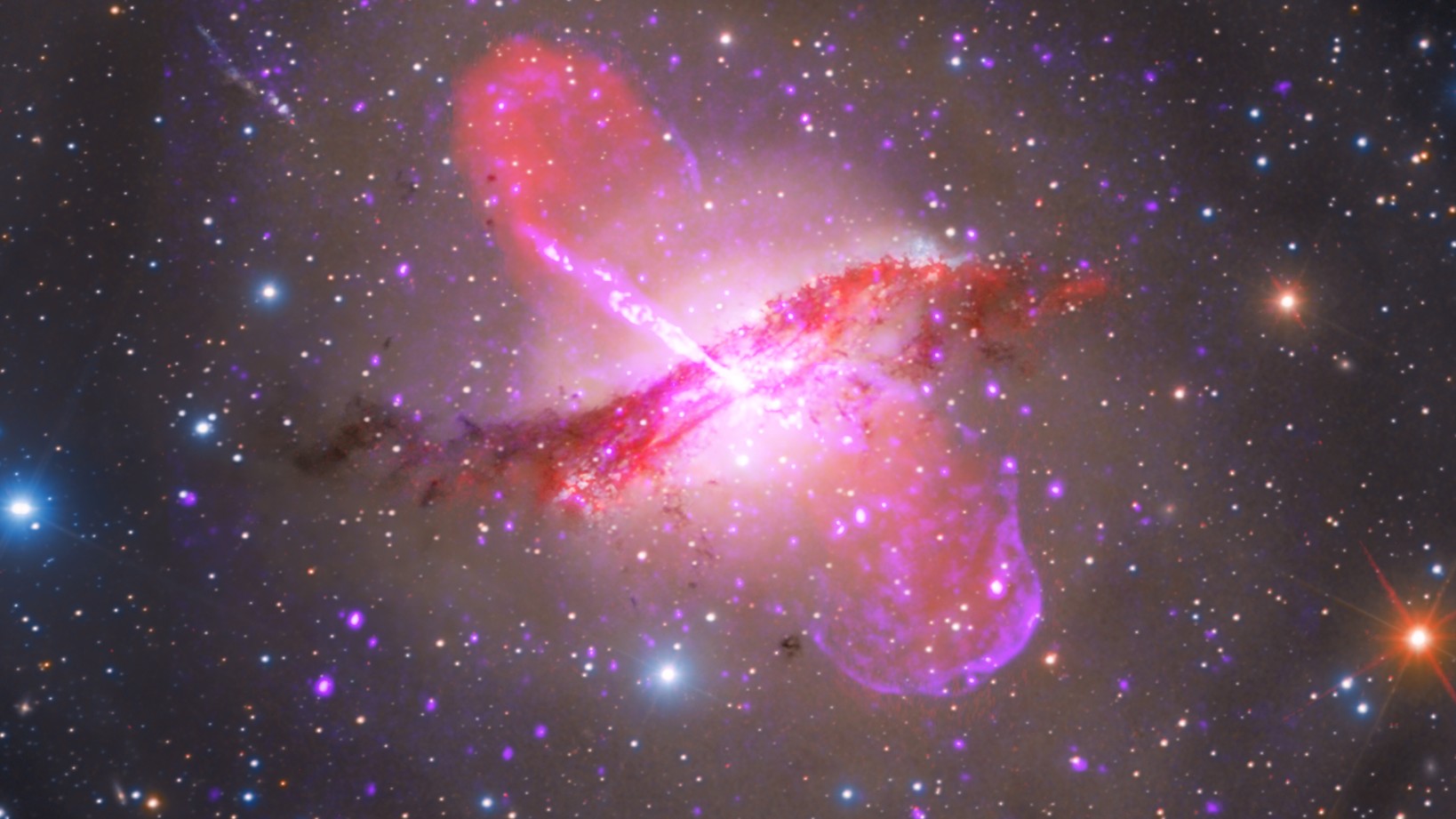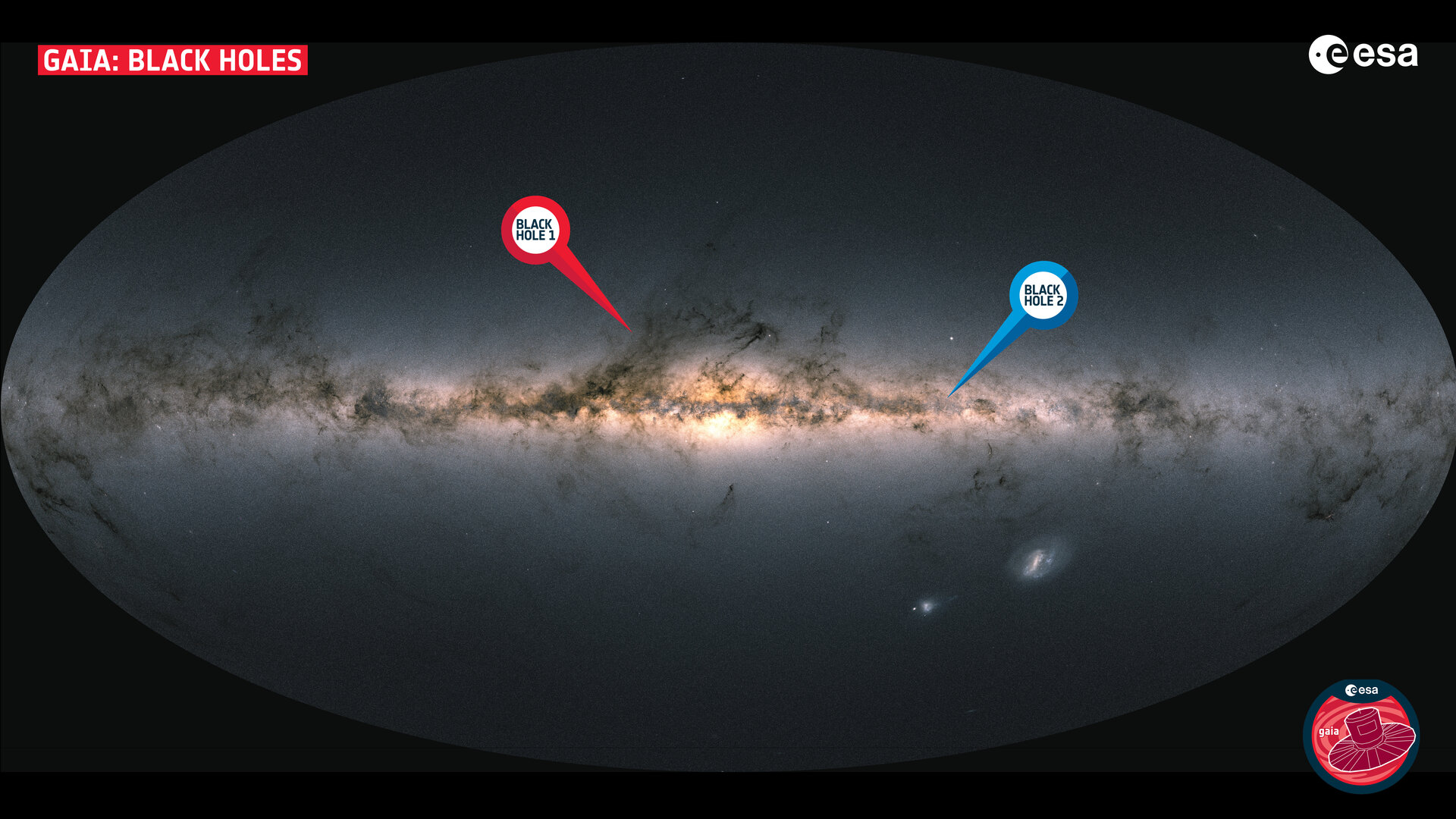New type of black hole found lurking in Earth's 'cosmic backyard' is closest ever discovered
The two closest black holes to Earth, named Gaia BH1 and BH2, may be part of a rare class of black holes never seen before, new research suggests.

Two recently discovered black holes are remarkably close to Earth — and they may represent a previously unknown category of the mysterious, massive objects. An international team of astronomers discovered the black holes using data from the European Space Agency's (ESA) Gaia mission combined with a bevy of ground-based telescopes from around the world.
Dubbed Gaia BH1 and Gaia BH2, the two black holes are the closest to Earth of any discovered so far, according to ESA. Gaia BH1 lies a mere 1,560 light-years from our solar system towards the Ophiuchus constellation, nearly three times closer than the previous record holder. Gaia BH2 sits about 3,800 light years away, toward the constellation Centaurus. Both are roughly nine to 10 times more massive than our sun, and sit within our own Milky Way galaxy.
Why has it taken so long for astronomers to notice such massive black holes? Because they're practically invisible. In the past, scientists searched for black holes by looking for the remnants of their latest meal; when a star or cloud of interstellar gas falls in to a black hole, it leaves behind a burst of electromagnetic radiation, which astronomers can detect to infer a black hole's presence, according to NASA.
Related: What's the biggest black hole in the universe?

But unlike previous discoveries, Gaia BH1 and 2 are completely dark; they don't appear to be snacking on anything at the moment, making them "dormant," or inactive. Instead, the researchers found the black holes by carefully tracking the movements of two sun-like companion stars orbiting around the cosmic giants.
The stars displayed a slight wobble as they traveled through space, indicating that something with a lot of gravity, such as another star, was tugging on them. But when researchers checked the area with telescopes, they couldn't find anything emitting radiation. According to the math, these movements only made sense if a black hole was involved.
While both black hole systems were discovered in late 2022, astronomers are just now beginning to appreciate how unique the nearby monsters are.The new research suggests that, unlike X-ray binaries — star-black hole pairs that orbit closely together and emit telltale X-ray and radio wave radiation — Gaia BH1 and Gaia BH2 likely represent a new category of black hole never seen before, according to ESA.
Sign up for the Live Science daily newsletter now
Get the world’s most fascinating discoveries delivered straight to your inbox.
"What sets this new group of black holes apart from the ones we already knew about is their wide separation from their companion stars," Kareem El-Badry, an astrophysicist at the Harvard-Smithsonian Center for Astrophysics and the discoverer of the new black holes, said in a statement. He added that these dormant black holes "likely have a completely different formation history than x-ray binaries."
Scientists hope that Gaia's next data release, which is scheduled for 2025, will uncover more dormant black holes and hopefully shed some (metaphorical) light onto how they formed. The new research was published March 30 in the Monthly Notices of the Royal Astronomical Society.

Joanna Thompson is a science journalist and runner based in New York. She holds a B.S. in Zoology and a B.A. in Creative Writing from North Carolina State University, as well as a Master's in Science Journalism from NYU's Science, Health and Environmental Reporting Program. Find more of her work in Scientific American, The Daily Beast, Atlas Obscura or Audubon Magazine.










